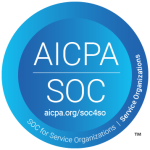Document Version Control gives Salesforce teams the structure they need to manage, track, and collaborate on files confidently. Every organization that uses contracts, proposals, and reports knows how easily mistakes happen. This is especially true when people share many versions through email or save them on local drives. Within Salesforce, where documents directly impact deals, customer service, and compliance, proper version management becomes a critical foundation for operational accuracy.
Without a clear method, teams waste time looking for the right file. They ay also recreate lost updates or fix data errors. A solid version control strategy helps users see what changed, who made the changes, and which version holds the latest approved content. It ensures that teams always work with the correct information and that no progress disappears during collaboration.
How Version Control Strengthens Collaboration
Version control transforms document management from an individual task into a coordinated process. When multiple team members collaborate on the same record, confusion can build quickly. For example, one person edits a proposal while another updates pricing, leaving the sales team unsure which copy to send. With proper controls in place, Salesforce users can view version history, restore older iterations if needed, and confirm that everyone works from the same approved file.
Real-time collaboration within Salesforce becomes more efficient when each update automatically syncs to the correct record. Instead of duplicating files or uploading new attachments manually, versioning tools track edits and preserve earlier work for transparency. This process builds trust between departments. Users can see that every document shows the latest data and keeps a record of past activity.
Teams that adopt structured version control experience fewer errors, faster turnaround times, and more confident communication. Instead of asking, “Who has the latest version?” teams already know where to find it.
Building a Document Version Control Framework
Every organization needs a defined process to manage document versions effectively. A good framework within Salesforce includes clear naming conventions, controlled access, and automated version tracking.
Consistent Naming and Metadata
Each file should include identifiable naming patterns and relevant metadata. For example, instead of “Proposal_Final,” use names that indicate both version and status, such as “Proposal_v3_Approved.” Tagging documents with metadata like project name, department, or approval state helps Salesforce users locate and verify files quickly.
Controlled Access and Permissions
Without structured permissions, anyone could overwrite or delete key documents. Teams should assign clear roles defining who can upload, edit, or approve versions. Salesforce allows role-based access control, which ensures accountability and prevents unauthorized changes. Proper governance avoids accidental edits while maintaining flexibility for collaboration.
Automated Version Tracking
Automation prevents human error. By configuring automatic version updates each time a file changes, teams gain transparency into document lifecycles. This allows everyone to see version history, track who made edits, and revert if a mistake occurs. When combined with audit trails, automation reinforces compliance and provides a clear record for review.
Version Control Across Departments
Different teams within Salesforce rely on version control for unique reasons. Sales teams need updated contracts to prevent pricing errors. Marketing departments require accurate collateral before campaigns go live. Support agents depend on current documentation to respond to customers accurately. A shared framework ensures that every department operates with clarity and consistency.
When sales and marketing align through versioned content, brand messaging stays uniform across proposals, presentations, and customer-facing documents. Service teams also benefit when knowledge articles or support files reflect the latest information. Each update in one department supports reliability across the organization.
Version control also assists in auditing. When leadership or compliance teams review a document, they can trace its evolution, understand each edit, and confirm that every change followed approval standards. This visibility builds confidence and reduces risk.
Common Version Control Mistakes
Even with good systems in place, teams often make mistakes that disrupt document management. Some upload new files instead of saving revisions within Salesforce. Others rename files inconsistently or store them outside the system entirely. These habits create confusion and weaken version control efforts.
Another common error is relying solely on manual tracking. Human oversight often leads to gaps, missing files, or duplicate content. Automation and structure are essential to sustain long-term accuracy. Consistency in naming, approval, and storage prevents fragmented document trails and strengthens collaboration.
Lastly, teams sometimes fail to communicate version updates. Without clear visibility, one department may use an outdated contract while another uses the latest version. A unified Salesforce workflow ensures that every user accesses the same document directly from the record, avoiding misalignment.
Integrating Version Control with Salesforce Workflows
Version control should function as part of the natural workflow within Salesforce, not as a separate process. When integrated into existing automation, it strengthens productivity across use cases such as contract approvals, onboarding, or service documentation.
For instance, when a contract moves through an approval stage, versioning automatically records updates and maintains a clear record of edits. Users no longer need to upload new files or rename documents manually. Instead, Salesforce tracks each change and stores the final version directly on the related record.
This integration supports real-time collaboration. As one user uploads a revision, others instantly see the update, eliminating the risk of overwriting or duplicating files. Teams that connect document control with workflows streamline approvals, accelerate deal cycles, and strengthen compliance reporting.
Choosing Tools for Salesforce Version Control
Salesforce provides a foundation for storing and managing documents, but optimizing version control often requires additional tools that expand its native capabilities. Solutions that integrate directly with Salesforce can provide enhanced file management, audit tracking, and collaboration features.
The right system should support:
- Real-time syncing with Salesforce records
- Automated version numbering and naming
- Role-based access and permissions
- Large file storage without performance issues
- Seamless integration with document workflows
These capabilities ensure that document management remains consistent across departments, preventing manual effort and eliminating silos.
Version Control in a Cloud-Based Environment
As organizations rely on cloud systems for collaboration, maintaining document integrity across platforms becomes increasingly complex. Files move quickly between users, partners, and customers. Without centralized control inside Salesforce, teams risk data inconsistency or loss.
Cloud-based version control gives teams access to accurate, secure information from anywhere. By connecting document storage and collaboration directly within Salesforce, organizations can maintain compliance while enabling flexibility. Every update syncs automatically, keeping files secure and traceable at all times.
For example, when marketing uploads a new brochure for a campaign, the sales team sees the update immediately. They can use the approved version without worrying about outdated attachments in their inboxes. This efficiency improves coordination and supports better customer experiences.
How S-Drive Simplifies Document Version Control
S-Drive enhances Salesforce document management by providing version control that feels native to the platform. It integrates directly into Salesforce records and automates version tracking for every uploaded file. Each time a user adds a new version, S-Drive maintains earlier copies for full visibility and audit readiness.
Teams gain control without leaving Salesforce. Users can preview documents, compare versions, and confirm accuracy through version history. Large organizations benefit from secure AWS storage, ensuring scalability for high document volumes. This combination of Salesforce integration and cloud performance helps businesses maintain accuracy and compliance with minimal manual work.
A real-world example can be seen in Case File Management and Work Orders, where S-Drive enables service teams to manage large volumes of customer documents within Salesforce. Each case file automatically stores new versions, providing an instant record of updates and approvals. That ensures service operations remain organized and auditable.
By aligning document storage, versioning, and collaboration inside Salesforce, S-Drive creates a single source of truth for every file. Teams no longer need to switch systems or track changes manually. They can collaborate, review, and finalize documents confidently within their existing workflows.
Future-Proofing Document Management in Salesforce
Version control will continue to evolve as organizations increase collaboration and automation. Salesforce users must adopt flexible systems that scale with their operations while maintaining strict data integrity. The next phase of document management combines automation, security, and intelligence to ensure accuracy at every step.
Investing in a robust version control strategy today prevents operational friction tomorrow. Teams that standardize document handling inside Salesforce gain not only efficiency but also clarity, accountability, and compliance readiness.
For organizations looking to modernize their document processes and bring version control directly into Salesforce, S-Drive delivers a proven solution. Contact us for a demo or review our AppExchange page to learn more about what S-Drive can do for you.



